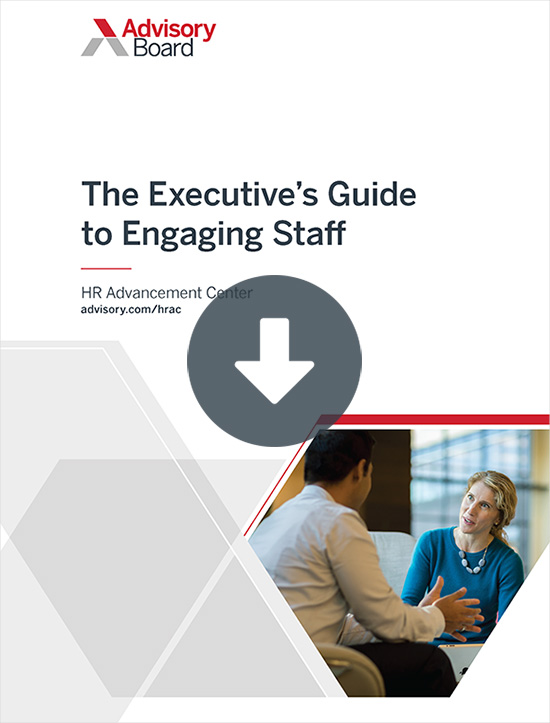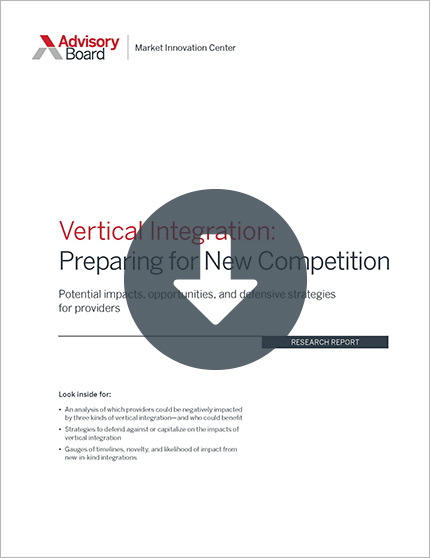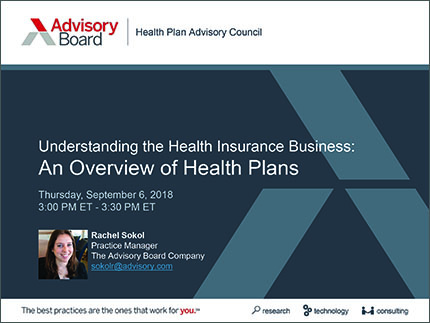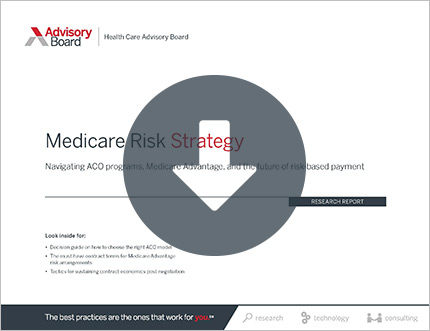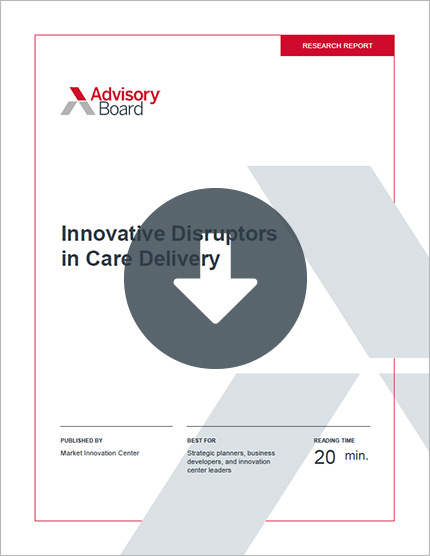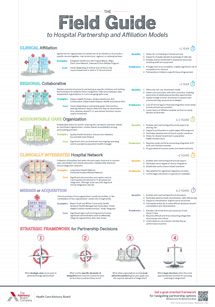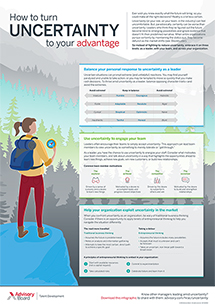Auto logout in seconds.
Continue LogoutWelcome to the "Lessons from the C-suite" series, featuring Advisory Board President Eric Larsen's conversations with the most influential leaders in health care.
In this edition, Jim Hinton, CEO of Baylor Scott & White Health (BSW), talks about joining Texas' largest nonprofit health system as an "outsider," the "freedom of capitation," how he's redefined the role of provider-sponsored plans, and some reflections on the BSW-Memorial Hermann merger that didn't come to pass.
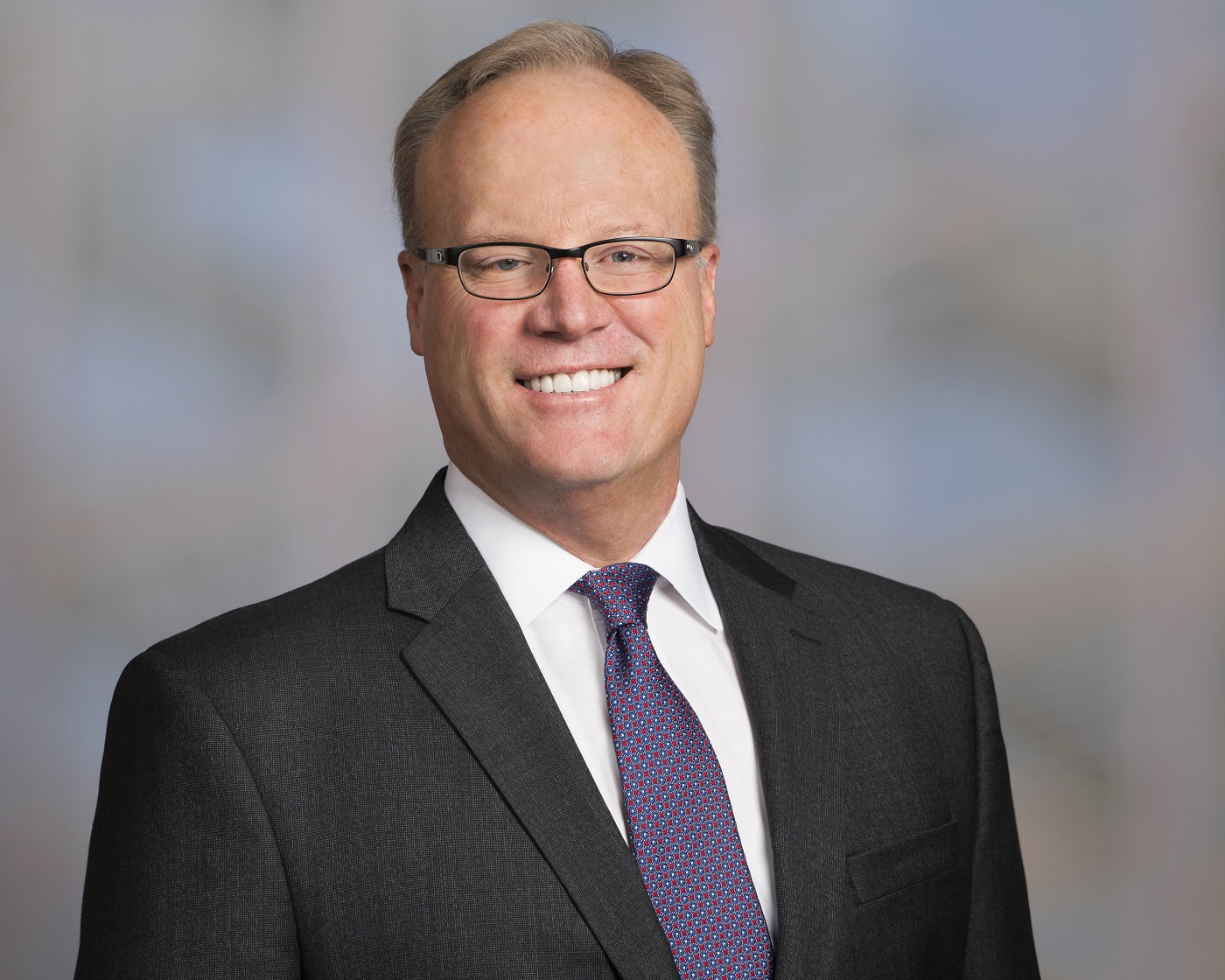
Jim Hinton, CEO of Baylor Scott & White Health
Question: Jim, when we last sat down together for this interview series, you were at the helm of Presbyterian Healthcare Services in New Mexico. Now you're CEO of Baylor Scott & White Health (BSW), a $9.1 billion, 50-hospital system with a geographic area of service that, if made into a state, would be the 8th largest in the country.
Let's talk about this transition. You came from this phenomenally integrated system at Presbyterian to something that was far larger at BSW, and something that—while ostensibly integrated—was still experiencing a residual "we-versus-they" dynamic from the 2013 merger of Baylor Health Care System and Scott & White Healthcare. What were your first impressions on arrival in 2017?
Jim Hinton: That merger was a slam-dunk right decision. Despite that, there were people who were still lining up on the sides of the two legacy organizations, so it became apparent to me that I needed to just say, "Enough." So I did. And I said, "And if you persist in talking about it, maybe this isn't the system for you."
You know, we had this big leadership meeting soon after I started. I walked in there and I said, "Look, I don't have a Baylor jersey in my closet. I don't have a Scott & White jersey in my closet. So if you're looking for me to put on one of those jerseys, I don't have one. I've got a Baylor Scott & White jersey." And people still repeat that back—in a state where religion and football are often confused, a football jersey analogy usually connects with people.
Q: And you were, by the way, the first "outsider" CEO in a century here.
Hinton: Exactly, Eric. And the first non-Baptist. And yeah, I think that was very intentional on the board's part—they wanted an outside person.
Now, whether I was the right choice is still up for debate. You can write about it in 10 years and say, "Oh wow, that was a disaster."
Q: The decision to go outside for the CEO is obviously a consequential one, and legacy Baylor and legacy Scott & White were among those rare systems to enjoy extraordinary stability and longevity at the CEO level over the years. Geisinger, with only seven CEOs over the past century, as well as Presbyterian and Intermountain, are also high on that list. You mentioned a moment ago the intentionality of the board in choosing an outside candidate. What factors weighed most highly in that decision do you think?
Hinton: Honestly, I bring a single-minded focus on what the market needs. If you open the Jim Hinton toolbox, it's only got one tool in it, and that is, "What is the market demanding?" To me, that is the only question that matters. And the market needs something different in Austin than it does in the Temple or in Dallas-Fort Worth.
So, if you ask me, "What's the strategy of Baylor Scott & White?" It's like Bob Dole during the presidential debates when he was asked whether he wore boxers or briefs, and he said, "Depends."
Q: I'm wincing.
Hinton: It's one of my favorite jokes of all time. I had to get it in the interview.
Q: We're definitely going to include it. I may regret it, but we're going to include it.
Hinton: But it does. It just depends. But there are some central guiding themes—we have to address total cost of care and convenience and ease of access, and, while quality is pretty good in the American health system, when you find gaps, you've got to pounce on them.
Building out a health system in Texas
Q: I'd like to juxtapose the markets in New Mexico and Texas for a moment. In New Mexico, 50% of the population is on Medicaid, so vertical integration and proficiency in managing the complexities of indigent care are what's required. But in Dallas-Fort Worth (DFW)—one of the fastest-growth MSAs in the country, with 250 people moving to the market every single day, as well as one of the more generously reimbursed markets out there—is a different situation entirely. Does that description feel right? What's your appraisal of the DFW market?
Hinton: Well, let's start with acknowledging that health care in DFW has traditionally been very fragmented and very hospital-centric. This community is defined by big boxes, which have then developed the little boxes. So, unlike New Mexico, where the hospitals were really a secondary consideration, here the hospitals are very prominent, and fee-for-service is very prevalent. In New Mexico, Medicaid meant capitation, and capitation means freedom—it's freedom from being shackled to a fee-for-service delivery system that causes you to do certain things certain ways in certain places.
In contrast, the Dallas-Fort Worth area will never be a capitated environment, at least not in my lifetime. Now, I do think some of the principles of value-based care are starting to take hold here. But there are a lot of moving pieces, and there's no certificate of need or Medicaid expansion. And the economic logic is to go where the commercially insured patients are, but as a mission-driven organization, we have a broader agenda, so we have to figure it out in this community, rather than just going where the money is.
Q: "Capitation means freedom"—now that's not a phrase you hear uttered by CEOs every day. With that in mind, what does that "broader agenda" you articulated look like? We know the industry's future won't necessarily be these hyper-quaternary, beautiful, gleaming towers. Of course, if you get really sick, you'll want to go to Baylor University Medical Center (BUMC). But outside of that serious intervention, you're going to want to build out a formidable ambulatory ring, which is exactly what BSW is doing. As an example, you've built 29 ambulatory surgical centers with USPI, seven freestanding EDs with Emerus, and an array of other distributed, lower-acuity sites. Fair characterization?
Re-ignite the growth engine: 3-part report series
Hinton: Yes, fair. I'll start by saying there isn't a "hospital system" of the future—there's a "health system" of the future. And that's a really important point, because BUMC will stand forever and there will be things that can be done only in those types of places. Places like that that have always drawn the luminaries who do the cutting-edge work, such as transplanting a woman's uterus and then delivering a full-term baby. So those things will continue to exist.
The challenge is how do you link together the partnerships we have so as to lower the overall cost of care and enhance the consumer experience? That's where we have some work to do, because the incentives aren't necessarily aligned with our goals. We've got to make sure that every procedure is done based on the evidence and the patient's condition, not because of the economics.
Because the big employers are on to this and no one should ever think they're not. You know, PepsiCo did some research that found that employing people in Dallas costs an extra $3,000 in health care costs alone, per worker and dependent. Where's the margin coming from to cover that?
Q: Your perspective on this emerging activism of employers is timely—do you think it's a true awakening on the employer side, or a false signal? You were the original architect way back when of one of these first direct-to-employer partnerships, between Presbyterian and Intel in Albuquerque. What is BSW doing on this front? Is DFW moving this direction?
Hinton: Baylor Scott & White has a direct-to-employer deal with Dallas Area Rapid Transit (DART), which has produced some amazing savings and better care. So, there are some examples here that things are starting to move. It's slow, and it's not going to be a linear move, but I think employers are starting to get that there's overutilization, unnecessary absenteeism—all of that. But it won't be a flip of the switch.
Redefining the provider-sponsored health plan
Q: Let's turn to the subject of vertical integration, as you were one of the original pioneers of building out a provider-sponsored health plan at Presbyterian, and you inherited a mature provider-sponsored health plan here at BSW. In fact, I'd characterize BSW as one of the "quieter" vertically integrated systems out there—we seem to hear a lot about Intermountain's Select Health, Sentara's Optima, etc., but not a lot about BSW's offerings. Can we start with some stats? How many covered lives do you have with BSW?
Hinton: About 400,000 lives—we've got about 40,000 lives in Medicare Advantage (MA) in Temple, we've got some commercial business in Central Texas, and we picked up a lot of Medicaid when we acquired FirstCare Health Plans earlier this year. But relative to a market of 28 million, 400,000 lives is still a rounding error.
Q: So what's your strategy look like? Because while that's a substantial number of covered lives for a health system, as you pointed out, it's not much compared to the national MCOs or BCBS in the market.
Hinton: You know, Eric, I don't view a provider-sponsored plan as the competitive solution against a United, Cigna, Aetna, or Blue Cross. You might get it on a slice basis if you're willing to experiment, but you're not going to take the whole group. Rather, provider-sponsored plans enable us to use the direct-payer incentives to internally reform the health care system in ways that others really can't, because they're not fighting the ground war.
And it is a ground war. It's hand-to-hand combat on these things, and that's what a provider-sponsored plan does for you. I think why so many of these plans went belly-up is they didn't understand what the role of the health plan was in their system. They were fighting the wrong battle—a battle they could never win.
Q: Fascinating. I've not heard a CEO articulate the purpose of a provider-sponsored health plan quite like that. What are the "right" battles for provider-sponsored plans?
Hinton: The battles that a provider-sponsored plan can win are Medicaid, MA, locally domiciled small employers, and maybe the individual market, depending upon where you see the individual market going. We're using the health plan to get better, not to get bigger.
Q: I think your insight about using a provider-sponsored plan to catalyze the health system delivery transformation is intriguing. But what's the requisite number of lives to tip the scales? Right now, you serve about 5.8 million lives across your geography and you have 400,000 lives through the health plan. Is that enough of a proportion to "internally reform" the health system?
Hinton: A couple of years ago, I chaired an AHA group that commissioned a study on the economics, and we found having between 400,000 and 500,000 lives is really where we can invest in the technology and the people and actually run a competent health plan.
But that's a different question than the one you asked, which was, "What causes the delivery system to change?" Now, have you seen that bumper sticker, "shift happens?"
Q: Sure have.
Hinton: Well, in Temple, that shift has already occurred. Because legacy Scott & White Healthcare had a health plan forever, and the doctors there practice in a way that is really integrated with what their patients are paying. It's a very tight and intimate economic transaction.
Q: Yes. But that's Temple, and legacy Scott & White. DFW, as we discussed, is a different animal altogether.
Hinton: Right, so the challenge will be how and where we introduce that in a market like Dallas Fort Worth. For us, the "where we will introduce it" is in Medicaid, which isn't much served in our system, and Medicare Advantage, which—with 75% of the seniors for Medicare going into Medicare Advantage—is going to happen, even up here in North Texas, an epicenter of prosperity. And we'll continue to explore relationships with major employers. So, we'll start to chip away, but it's not going to be a knockout punch.
Q: So this is a work in progress, and reconciling two very different geographies, with different paths/speeds to value. It sounds like it's happening, but incrementally.
Hinton: I think that's very fair. But what exists today is an environment of profound disillusionment with how hard it is to access care in the DFW market. You know, if you're in one of our clinics here through our physician group, HealthTexas Provider Network, and you get referred out to a gastroenterologist, and you go to a freestanding GI lab, you're going to get several emails to sign up in their portal, to get all your instructions, to fill out all the same forms.
So, they paved the cow path, right? You don't have to fill out a clipboard of forms anymore, but ultimately, you're spending the same amount of time on this stuff. Bottom line: it needs to be more convenient for those we serve, and that's what we're working toward.
Digital transformation
Q: What you just mentioned about automating poor practices is something, I think, that's endemic in the industry—yes, the process is digitized, but we just enshrined an inefficient process into bits and bytes. The cow path is still a cow path. So how is BSW thinking differently about the digital transformation?
Hinton: There are no new ideas in the world—there are just old ideas that get recycled and renamed. We've taken a page from Stephen Covey's book, and we begin with the end in mind. We call it right-to-left thinking. You jump to the future—you touch it, smell it, feel it, experience it, you come to some agreement about what that desired state is—and then you come back to your present state and figure out how to get from here to there.
A lot of what we're talking about today is whether we need to make every one of those stops along the way to becoming a digital business. You know, I always think about MacArthur fighting WWII—he could have gone up every one of those islands, but instead, he leapfrogged to the most strategically important ones. We're trying to define what our destination really looks like, and the best way to get there.
Q: And what about some of the non-traditional disruptors knocking on this same door? I look at Optum, which spent $3.8 billion on its own technology and innovation agenda last year; Apple, with a $17 billion R&D budget; and Amazon, with a $24 billion R&D budget. These are massive war chests, deployed against some of these same digital objectives health systems are working on. And I haven't even mentioned private equity or venture capital in the space.
Hinton: Yes, those are innovative companies with a lot of resources. But we have our advantages too. And we have some amazing people in our digital shop, and their advantage is they're not disconnected from the day-to-day realities and complexities of the health system. So, I think we're can use that tension in a productive way.
Q: So I'm hearing you say, Jim, that there's an inherent health system advantage here—sure, we'd love the R&D budget of any of these big firms, but my folks are "in it," they are connected to the patients, and that's a competitive edge. And I agree. But how much of this innovation agenda can be driven on your own, and how much will be via partnership?
Hinton: Well, we'd gladly partner externally if it was the right partner, with all the aligned incentives and all the things that are important to us. But if you're talking about, let's say, private equity buying up gastroenterology clinics and using AI to make themselves more efficient fee-for-service purveyors, that's not going to work, right? Some of that might improve productivity—say, you learn don't need to do that screening colonoscopy. But if it doesn't need to do that screening colonoscopy, how does the business model continue?
If we do this right, and think about it the right way, we can do something radical—by ourselves or in partnership. And the door to that is primary care. One of the first meetings I attended when I got here was focused on primary care redesign. And I said, "We've got to get to one doctor to 20,000 panels." But the tools aren't there today. One day, yeah, but not yet.
Memorial Hermann
Q: Let's change directions, Jim, and talk about M&A, specifically the merger with Memorial Hermann you announced in October 2018. Had it been finalized, the merger would have created the largest health system in the state—a $14.4 billion system, with 67 hospitals and 70,000-plus employees serving 30 districts in Texas. But earlier this year, you announced that it wasn't going to happen.
Talk about the original ambition for the merger, and then what you can share about why it didn't come to pass.
Hinton: Originally, both organizations had independently assessed scope and scale of services, and we both concluded that scale was going to matter going forward. And maybe that's a blinding flash of the obvious, but we shared that conclusion, and we had enough similarities in terms of mission and culture to ink the letter of intent.
Now, during due diligence, there was nothing from a business analytics standpoint that caused the deal to fall through. Every reporter I've talked to is just convinced that someone has incriminating pictures of the other, right? But there are no pictures.
Q: I know you both well; I'm pretty sure there are no pictures.
Hinton: And if there were pictures, they would not be interesting. Actually, maybe they'd be so uninteresting that that would hamstring the deal. "Here's Jim at the grocery store on Sunday afternoon pushing a cart through the vegetable aisle," you know. So it wasn't any of that.
Ultimately, I think each board concluded it could achieve many, although not all, of the benefits of the merger by making changes within its own organization. But we haven't given up on the idea that the right scale matters.
Q: I want to double down on that—now that this merger has been put to rest, how are you thinking about scale?
Hinton: We still believe that there has to be a funding source for the transformation of health care, and these mergers can create that funding source. For instance, when the merger occurred between Baylor and Scott & White, there was a very focused effort on synergies and savings, and those were realized, those dollars were reapplied into the system. Because it's a pretty simple equation: If you have two of everything—two billing offices, two IT shops—and you get it to one, you can cut total spend and produce a lot of savings.
So now we're figuring out where we're going to get those savings. We can generate some of that internally by operating more efficiently. Pete McCanna, who joined me here as president, and I are a good team on this stuff. We're both just cheap.
Q: How are you thinking about a potential merger or acquisition looking forward? Would you be willing to look out of state?
Hinton: We still believe that scale in terms of synergy and capability makes sense. So, if another system has a capability that we don't have, or we don't have the muscle we need, that would be interesting to us.
And I don't think geographic issues are as compelling as they once were, because you're not operating the business together there. You can get some synergies like Baylor and Scott & White, but you're really looking for a lot of the backend stuff that can be done anywhere. And you're competing increasingly with companies that don't even think in terms of geography—Google doesn't think about geography. Amazon doesn't either.
Looking back and wrapping up
Q: Jim, before we wind down, I want to catch up a bit on your career, and ask you to offer some reflections. You got started early—one of the youngest system leaders I know of, becoming CEO at Presbyterian at just 36 years old. What was that "aha" moment that made you a convert to health care?
Jim Hinton: Well, my wife calls me the accidental CEO, which is probably all you need to know. I don't know if I want that in the story but—
Q: Oh, it's definitely going to be in the story. I might even make it the title.
Hinton: Honestly, I wasn't really passionate about anything when I graduated college, but I enjoyed economics in school and psychology, so law school seemed like a reasonable path. I was ready to go, but, during my senior year, the hospital administrator—Bill Johnson—at the University of New Mexico Hospital, where I was working in the admitting department, asked me, "Have you ever considered health care administration?"
Now, I'd never given two minutes of thought as to who ran these places. I don't think I even knew that the profession existed. Anyway, one thing led to another, and I went down to Tempe, Arizona, to get a graduate degree in health care administration. I give Bill a lot of credit for helping me see another path forward.
Q: And after graduation, you accepted a one-year rotation at Presby?
Hinton: Yeah, I was going to be there one year. And by the way, if you said "Presby" in New Mexico, you get fined $10.
Q: Let's add that to my tab. I will note that your one-year rotation led to a minor extension of 32 years. Fast forward to now, and it's hard to believe its three decades later. Let me ask—you're nowhere near retirement. But you joked to me before about those folks who "fail" retirement—they plant the garden, clean the garage, and then … they go stir crazy. How are you thinking about your own next chapter at this point?
Hinton: Well, I'm not spending a lot of time thinking about it. I used to. When I was 36 and I got that job, and it was so overwhelming, I thought a lot about retirement—much more so when I was younger than I do now.
Q: Why's that?
Hinton: Because this isn't a job so much as a lifestyle. You choose the CEO lifestyle, and that means you're on all the time. There is always something going on and you always have to have an answer. And a lot of that is very, very energizing.
So, I don't have a good answer. But my garage is already pretty clean, so that's not something I aspire to. I'd still like to help health care get better, and so that's what I want to stay focused on. I just wandered into this field, and it's embraced me, and I want to help it get better, because I see that it can be. That's what I want to do.
Q: Last question: If we turn things around and look at your career retrospectively rather than prospectively, what are you most grateful for?
Hinton: Jim Collins has this concept called "who luck"—essentially, "Who have you known?" And I'm most grateful for those people; the "whos" who've been there, who had confidence in me, who saw things in me I didn't see myself, who gave me chances and advice and helped steer me in my career. That's what I'm most grateful for, no question about it.
Get more lessons from the C-suite
Check out Eric's recent must-read interviews with top hospital and health system leaders:
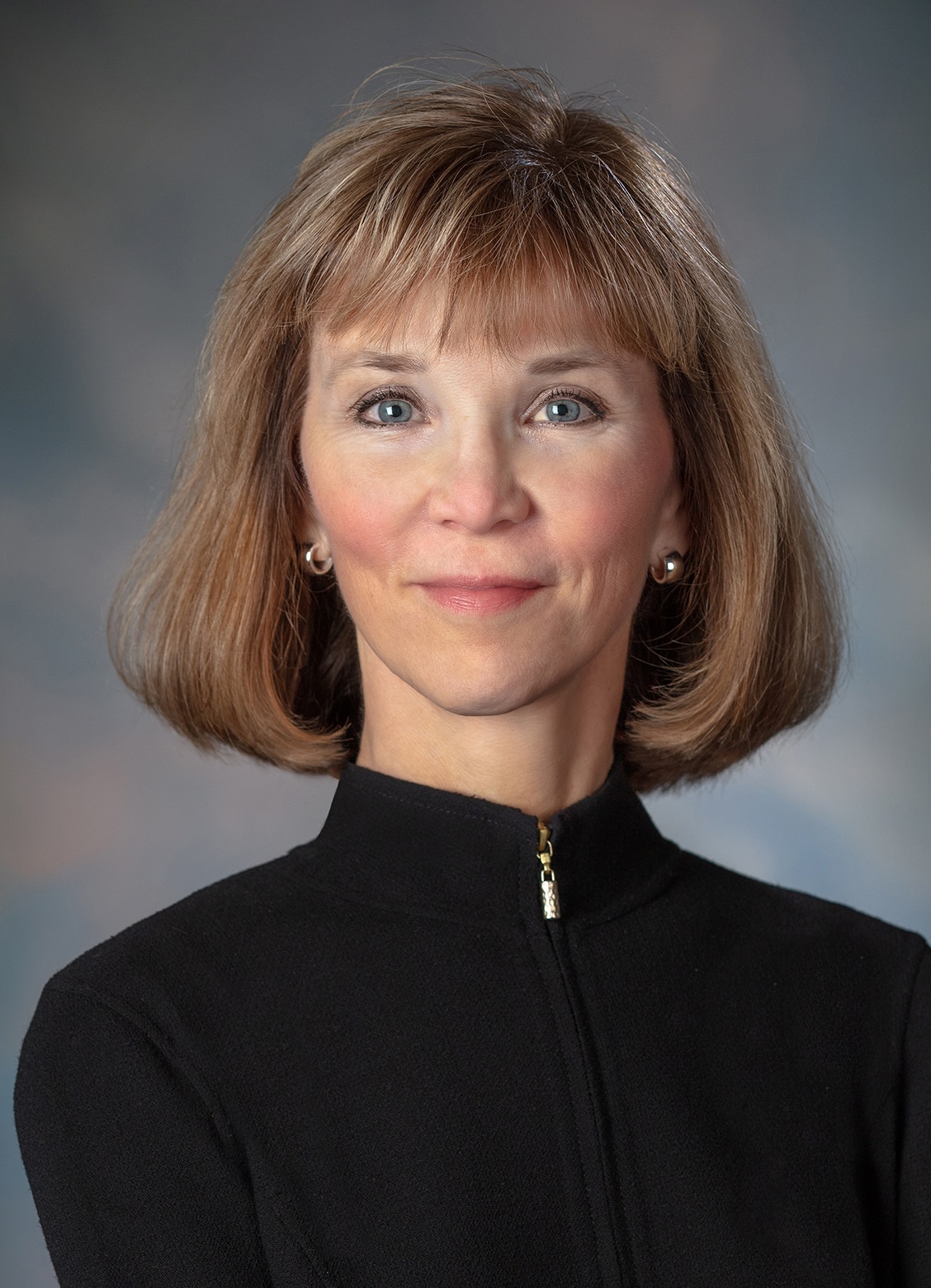 From Ascension to Intermountain and now 'home' at SSM Health: How Laura Kaiser is 'systematizing' mission-based care
From Ascension to Intermountain and now 'home' at SSM Health: How Laura Kaiser is 'systematizing' mission-based care
Laura Kaiser, president and CEO of SSM Health, talks about the call to nonprofit health care, SSM Health's legacy of caring for "Our Dear Lords," and why she's completed at least one triathlon almost every year—for the last 36 years. Read our interview with Laura.
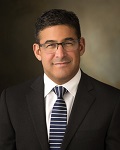
Marc Harrison, president and CEO of Intermountain Healthcare, talks about Intermountain's recently announced strategic reorganization, previews the launch of a ""virtual hospital"" to better serve rural communities, and shares the surprising worry that keeps him up at night. Read our interview with Marc.
'A little bit of a pirate': How Kelby Krabbenhoft built a $6B system—and where he's taking Sanford next
Kelby Krabbenhoft, president and CEO of Sanford Health, talks about the unprecedented CEO-philanthropist partnership behind Sanford's rapid growth, why a successful leader needs to be ""a little bit of a pirate, and the merger that will make Sanford a nearly $6 billion health system. Read our interview with Kelby.
Subscribe to At the Helm
To get more of our top insights for CEOs and other C-suite executives, make sure you're subscribed to the ""At the Helm"" blog.
"
Don't miss out on the latest Advisory Board insights
Create your free account to access 1 resource, including the latest research and webinars.
Want access without creating an account?
You have 1 free members-only resource remaining this month.
1 free members-only resources remaining
1 free members-only resources remaining
You've reached your limit of free insights
Become a member to access all of Advisory Board's resources, events, and experts
Never miss out on the latest innovative health care content tailored to you.
Benefits include:
You've reached your limit of free insights
Become a member to access all of Advisory Board's resources, events, and experts
Never miss out on the latest innovative health care content tailored to you.
Benefits include:
This content is available through your Curated Research partnership with Advisory Board. Click on ‘view this resource’ to read the full piece
Email ask@advisory.com to learn more
Click on ‘Become a Member’ to learn about the benefits of a Full-Access partnership with Advisory Board
Never miss out on the latest innovative health care content tailored to you.
Benefits Include:
This is for members only. Learn more.
Click on ‘Become a Member’ to learn about the benefits of a Full-Access partnership with Advisory Board
Never miss out on the latest innovative health care content tailored to you.
